Abstract
Several 1- and 2-carbon halogenated aliphatic organic compounds present at low concentrations (less than 100 micrograms/liter) were degraded under methanogenic conditions in batch bacterial cultures and in a continuous-flow methanogenic fixed-film laboratory-scale column. Greater than 90% degradation was observed within a 2-day detention time under continuous-flow methanogenic conditions with acetate as a primary substrate. Carbon-14 measurements indicated that chloroform, carbon tetrachloride, and 1,2-dichloroethane were almost completely oxidized to carbon dioxide, confirming removal by biooxidation. The initial step in the transformations of tetrachloroethylene and 1,1,2,2-tetrachloroethane to nonchlorinated end products appeared to be reductive dechlorination to trichloroethylene and 1,1,2-trichloroethane, respectively. Transformations of the brominated aliphatic compounds appear to be the result of both biological and chemical processes. The data suggest that transformations of halogenated aliphatic compounds can occur under methanogenic conditions in the environment.
Full text
PDF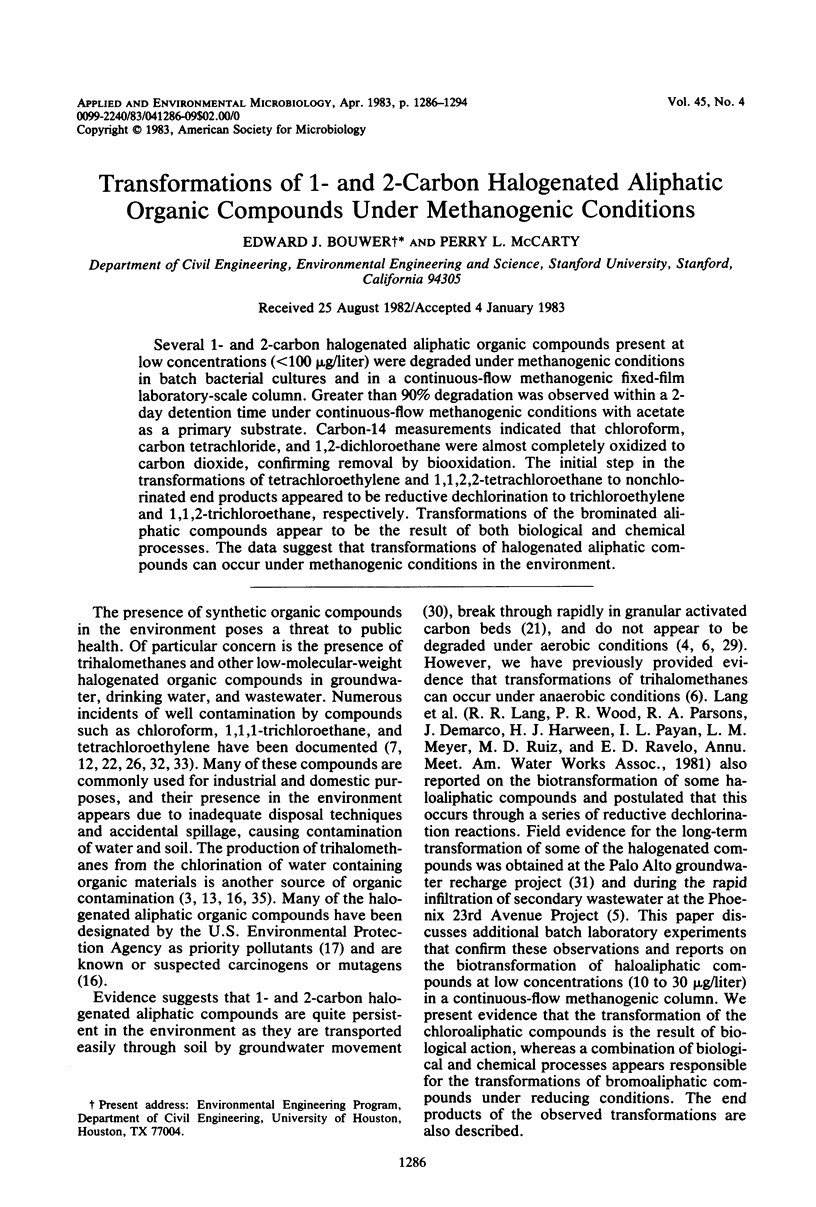
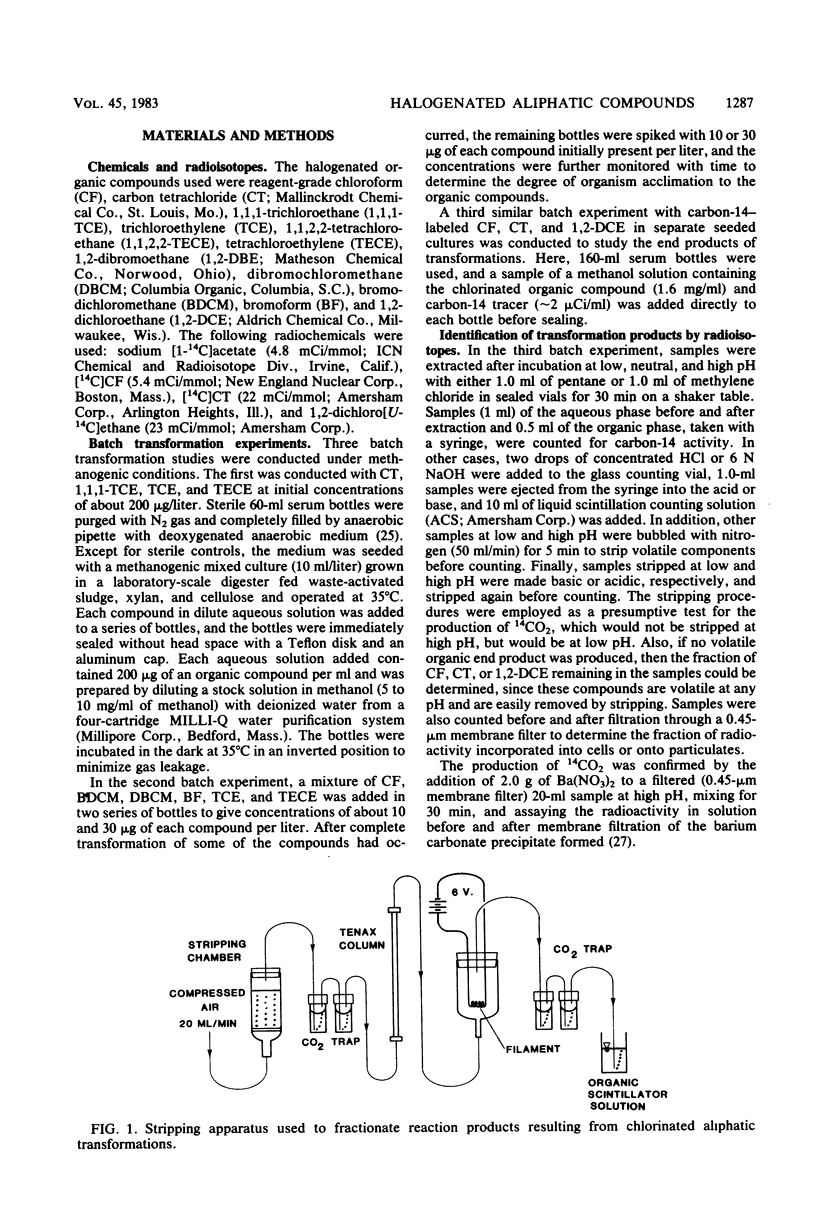
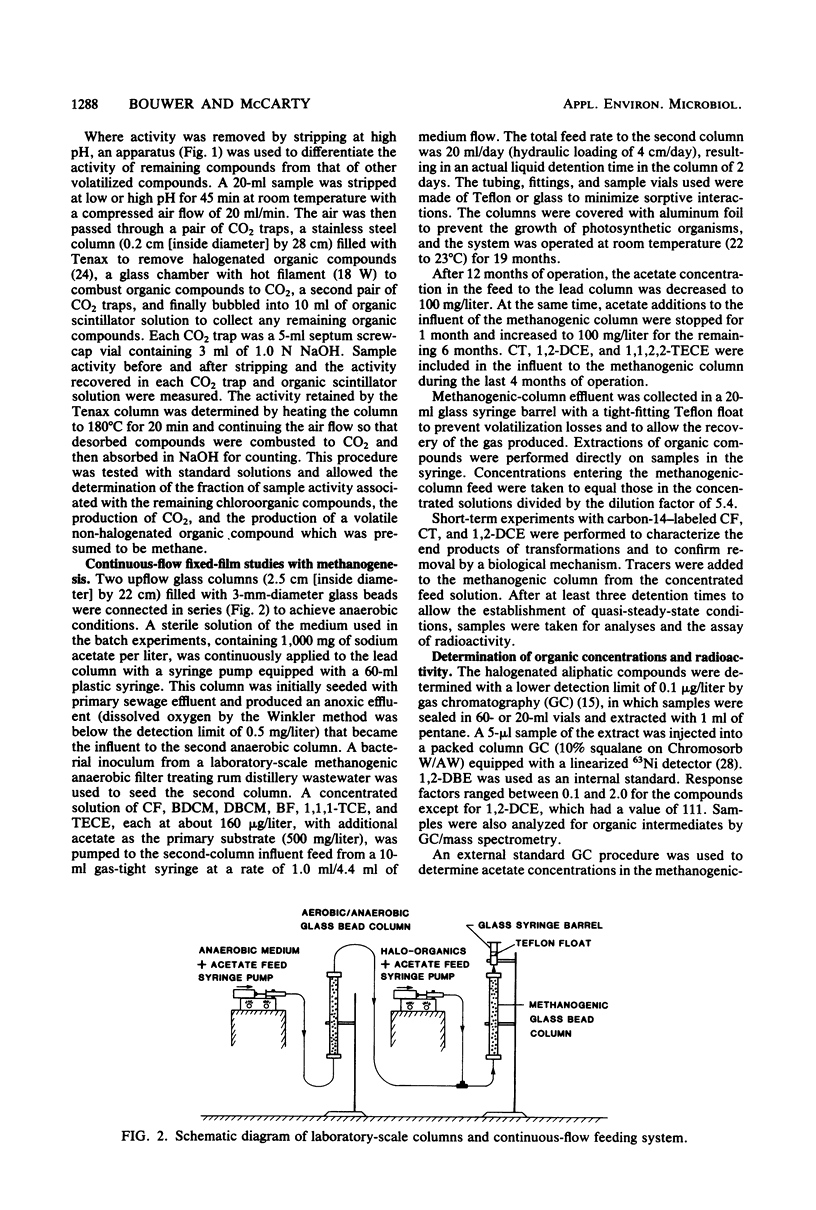
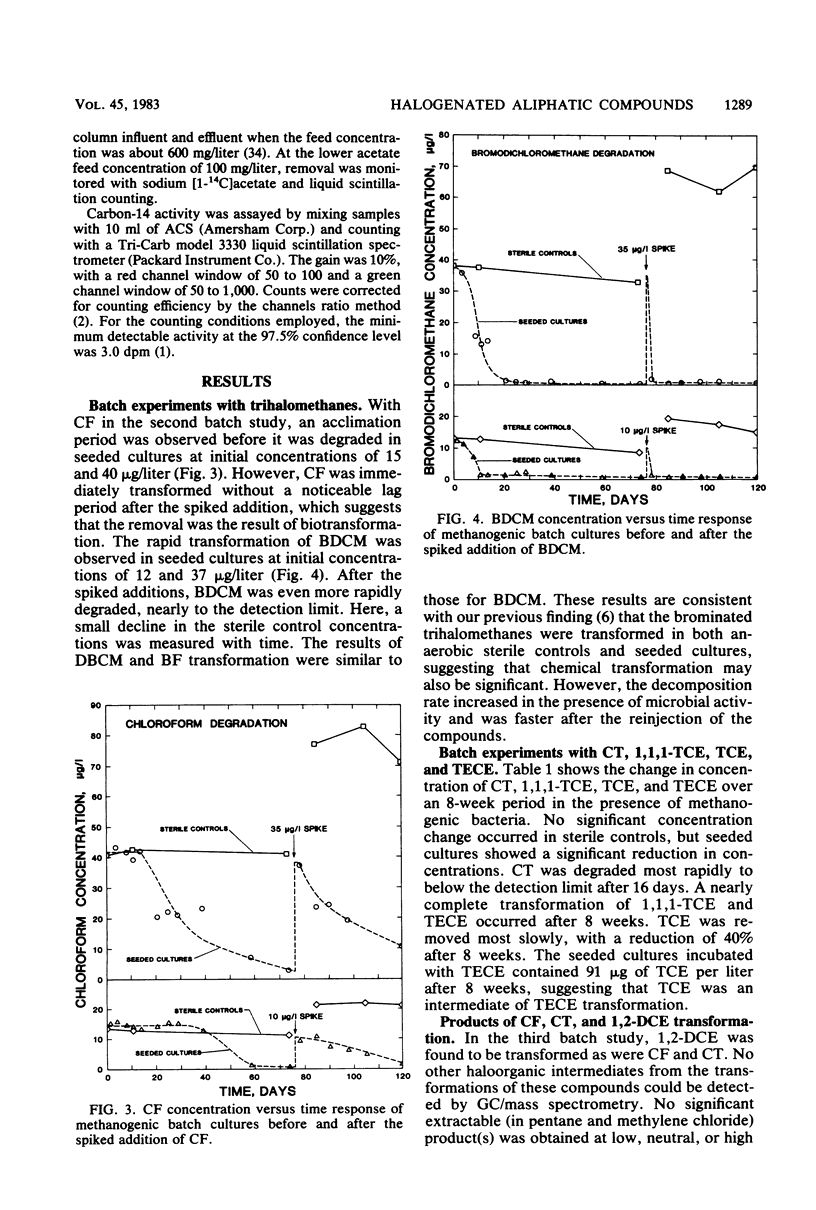
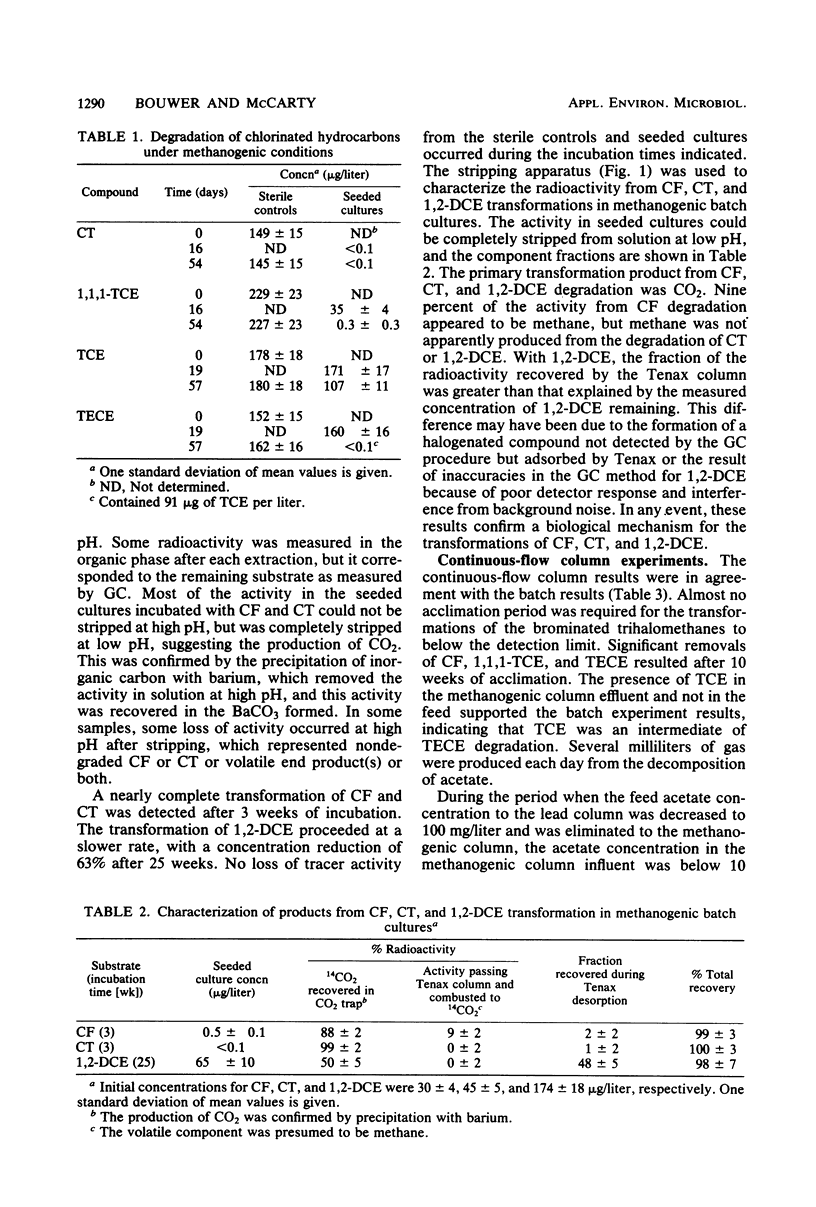
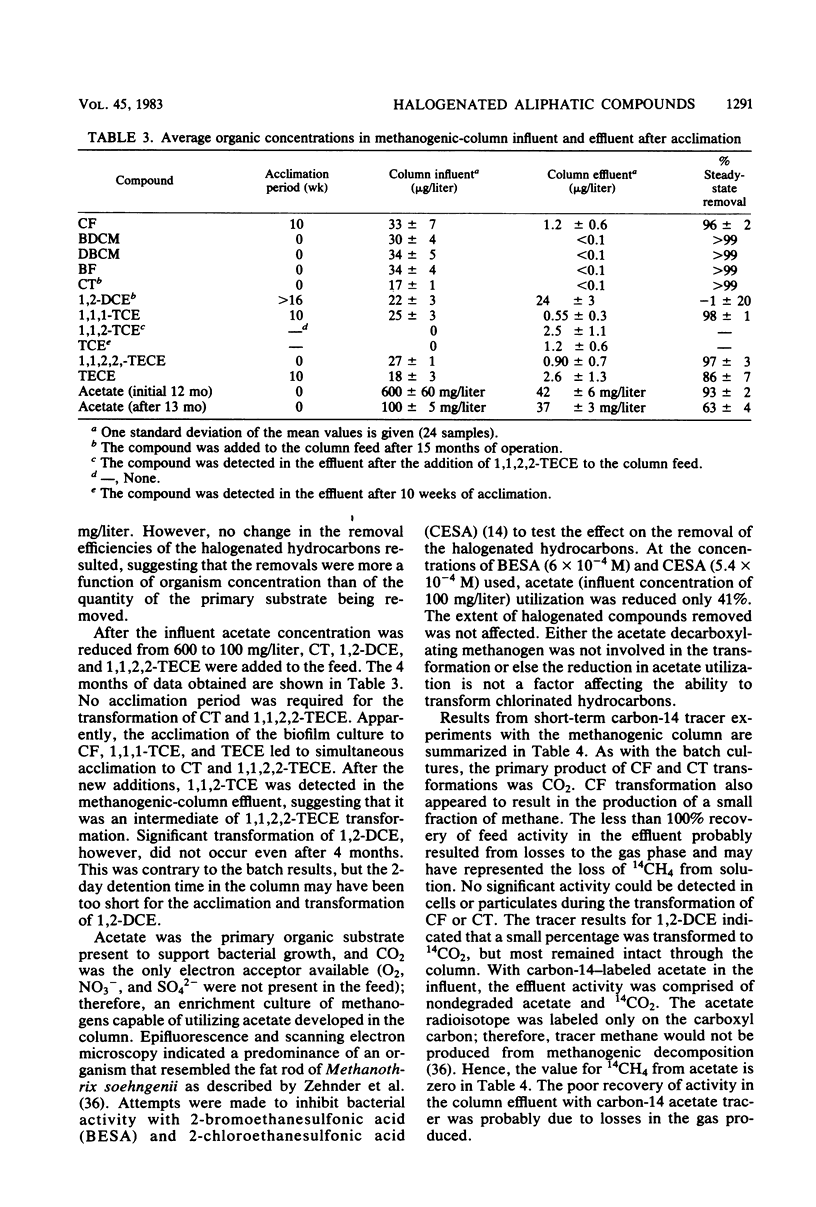
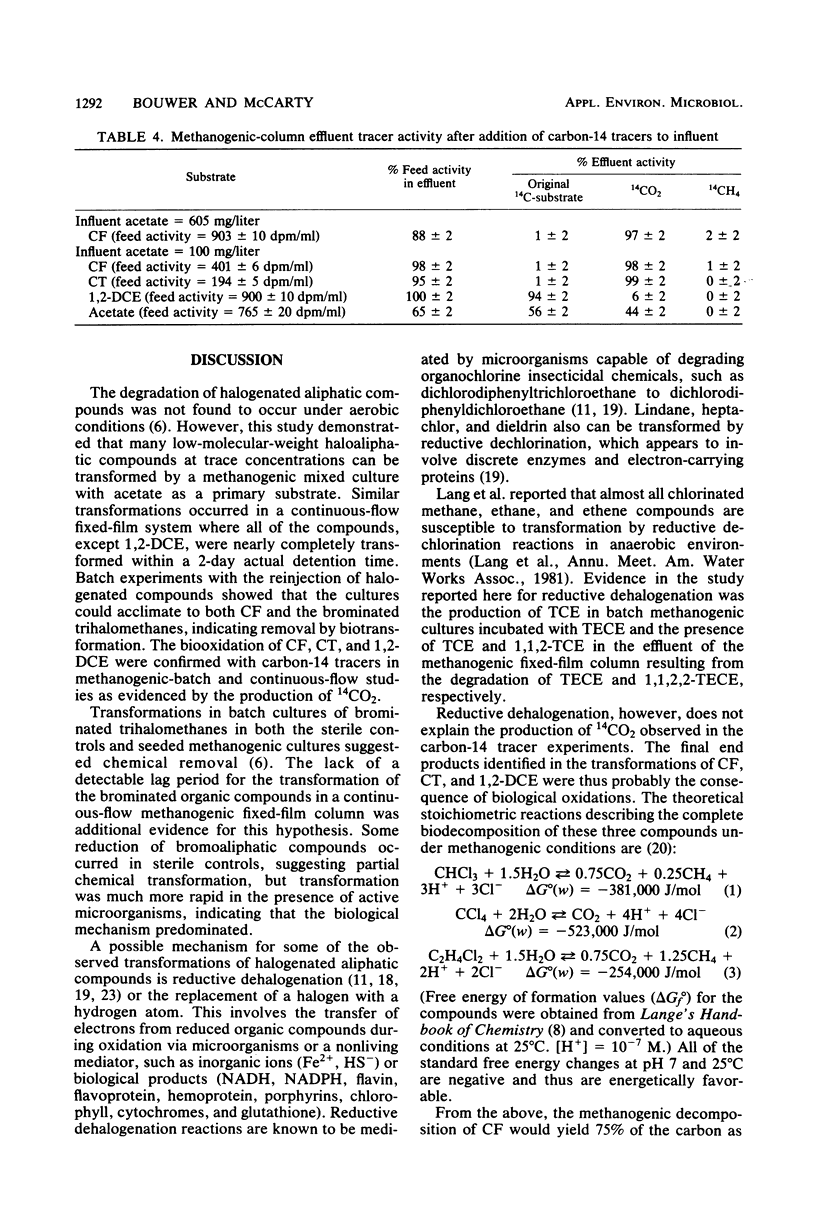
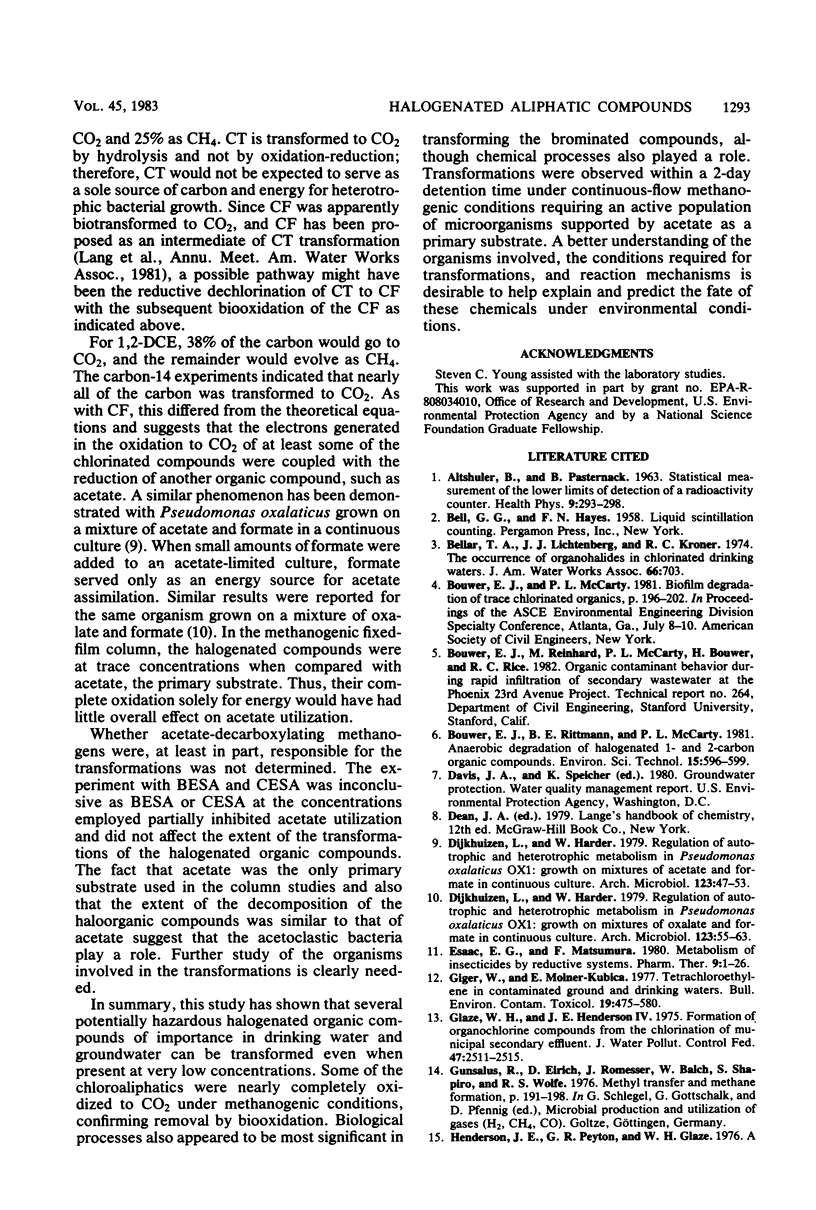
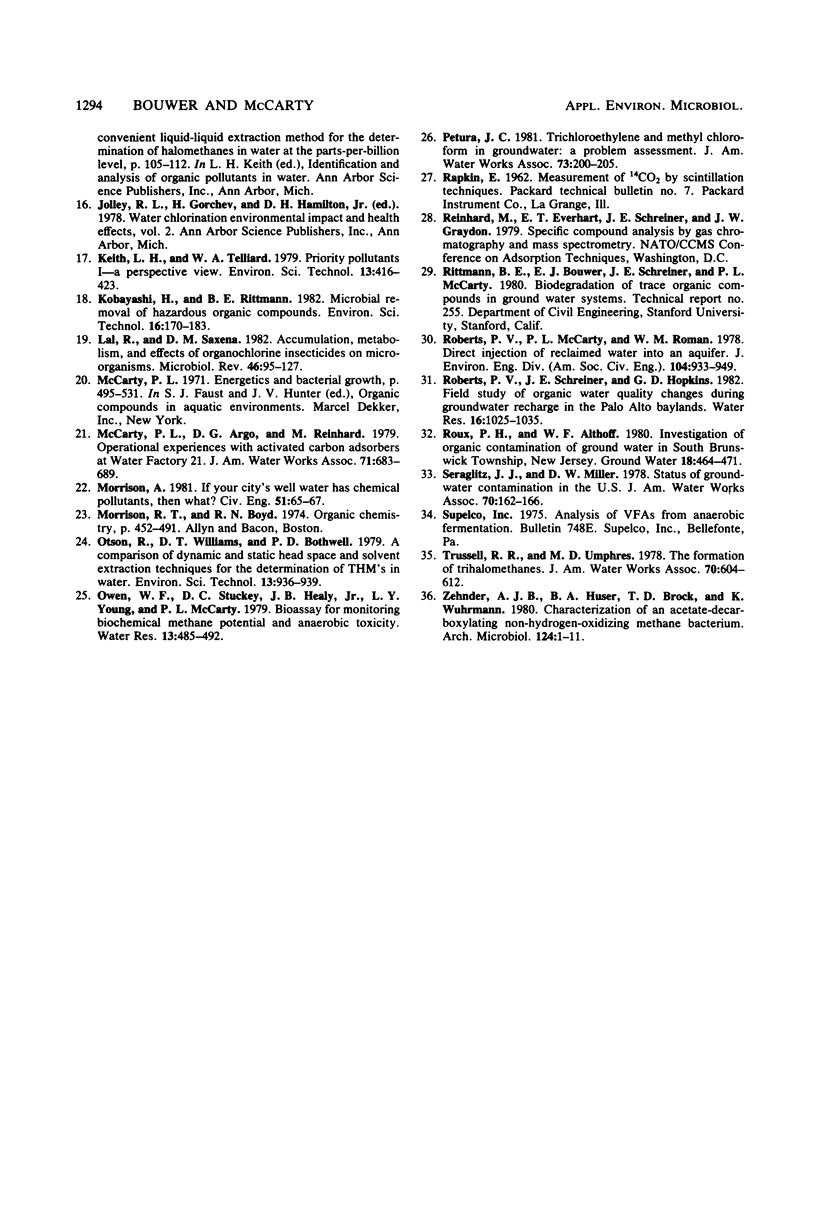
Selected References
These references are in PubMed. This may not be the complete list of references from this article.
- Esaac E. G., Matsumura F. Metabolism of insecticides by reductive systems. Pharmacol Ther. 1980;9(1):1–26. doi: 10.1016/0163-7258(80)90014-5. [DOI] [PubMed] [Google Scholar]
- Giger W., Molnar-Kubica E. Tetrachloroethylene in contaminated ground and drinking waters. Bull Environ Contam Toxicol. 1978 Apr;19(4):475–480. doi: 10.1007/BF01685829. [DOI] [PubMed] [Google Scholar]
- Lal R., Saxena D. M. Accumulation, metabolism, and effects of organochlorine insecticides on microorganisms. Microbiol Rev. 1982 Mar;46(1):95–127. doi: 10.1128/mr.46.1.95-127.1982. [DOI] [PMC free article] [PubMed] [Google Scholar]
- Zehnder A. J., Huser B. A., Brock T. D., Wuhrmann K. Characterization of an acetate-decarboxylating, non-hydrogen-oxidizing methane bacterium. Arch Microbiol. 1980 Jan;124(1):1–11. doi: 10.1007/BF00407022. [DOI] [PubMed] [Google Scholar]


